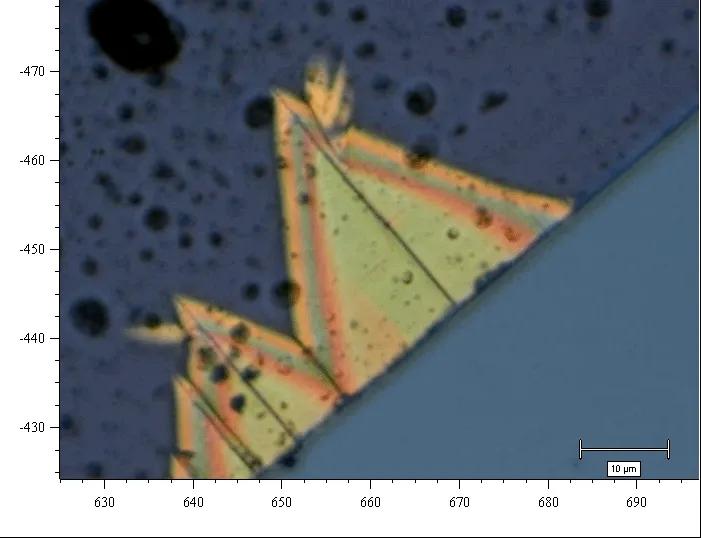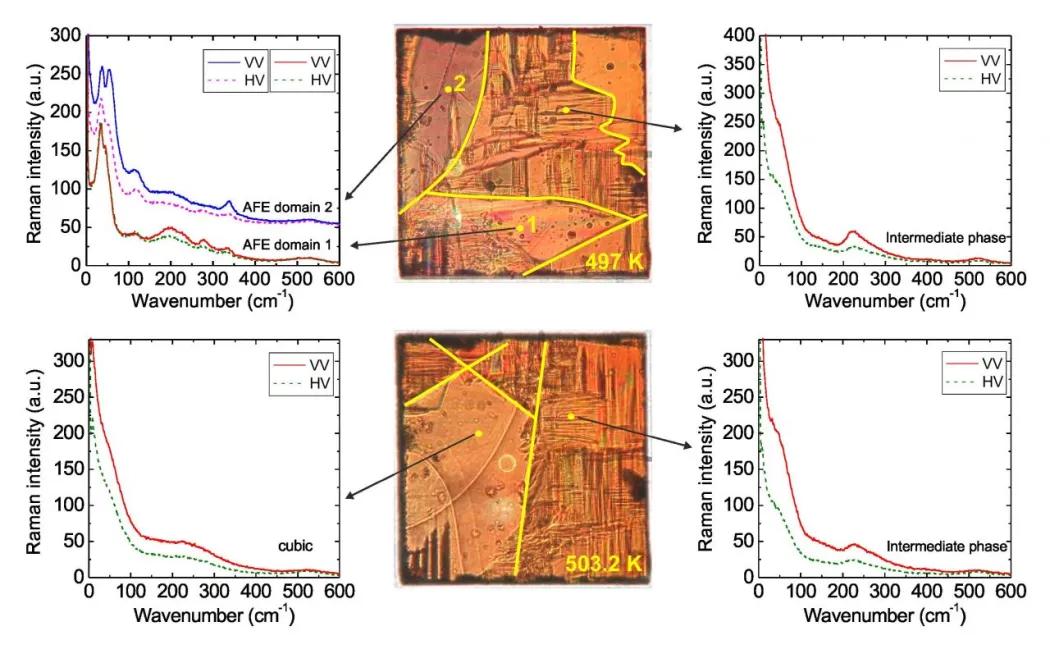Ferroelectric and antiferroelectric single crystals show phase transitions that can be evidence by different experimental methods. In this work we investigated single crystals of antiferroelectric PbZrO3 substituted with 1% of Ti (PZT 99/1) by means of optical microscopy, micro-Raman scattering, second harmonic generation and dielectric spectroscopy, on heating to and cooling from its cubic phase.
Our measurements confirmed that these crystals undergo two phase transitions within the approximate temperature range 488–503 K. Second harmonic generation showed a marked signal between the two anomalies, implying that the intermediate phase is non-centrosymmetric. In situ Raman spectroscopy and the presence of second harmonic signal, excluded the antiferroelectric state of this phase. The intermediate phase of PZT 99/1 crystal is similar to the rhombohedral ferroelectric one with the R3m space group.

